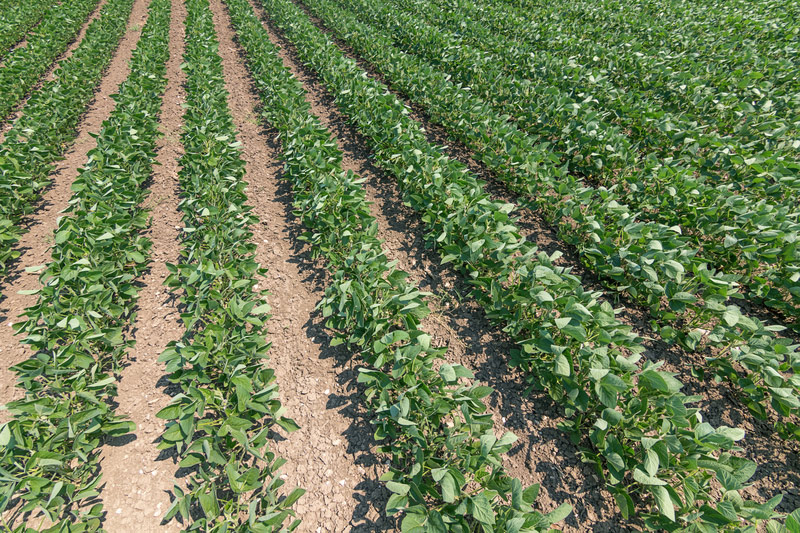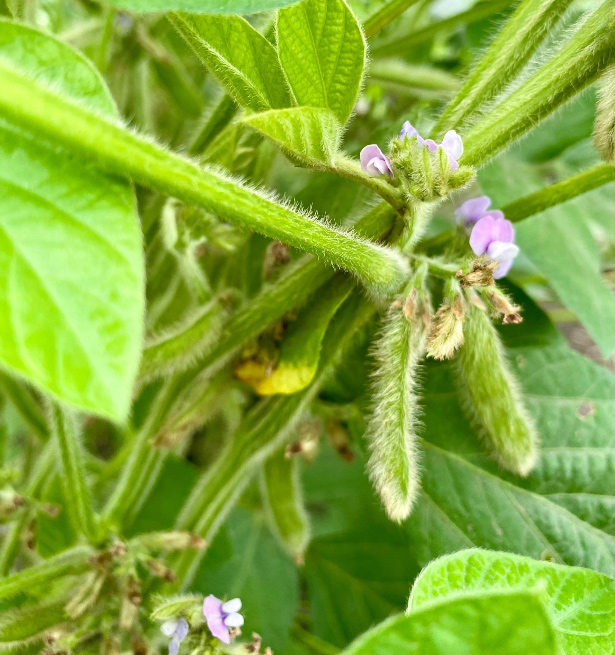
4th September 2022 Gene editing of soybean boosts yield by 20% Multiple gene editing of soybean can improve photosynthesis and boost crop yields by 20%, according to a study by the University of Illinois Urbana-Champaign.
A team of researchers has, for the first time, proven that multi-gene engineering of photosynthesis increases the yield of a major food crop. After more than a decade of working toward this goal, a team led by the University of Illinois has transgenically altered soybean plants to increase the efficiency of photosynthesis. This resulted in an average of 20% greater yields and in some cases 33% without loss of quality. Realising Increased Photosynthetic Efficiency, or RIPE, is an international research project that aims to increase global food production by improving photosynthetic efficiency in crops for smallholder farmers in Sub-Saharan Africa. "The number of people affected by food insufficiency continues to grow, and projections clearly show that there needs to be a change at the food supply level to change the trajectory," said Amanda De Souza, RIPE project scientist, and lead author of a paper in Science. "Our research shows an effective way to contribute to food security for the people who need it most, while avoiding more land being put into production. Improving photosynthesis is a major opportunity to gain the needed jump in yield potential." Photosynthesis – the natural way that all plants convert sunlight into energy and yield – is a surprisingly inefficient process involving 100+ steps, many of which have potential for improvement. In first-of-its-kind work, the RIPE team engineered the VPZ construct within the soybean plant and then conducted field trials to see if yields would increase. The VPZ construct contains three genes that code for proteins of the xanthophyll cycle, a pigment cycle that helps in photoprotection of plants. This cycle is activated by the leaves in full sunlight, to protect them from damage and dissipate excess energy. However, when the leaves are shaded (by other leaves, clouds, or the sun moving in the sky) this photoprotection needs to switch off, so the leaves can continue the photosynthesis process with a reserve of sunlight. It takes several minutes for the plant to switch off the protective mechanism, costing plants valuable time that could have been used for photosynthesis. The overexpression of the three genes from the VPZ construct accelerates the process, so every time a leaf transitions from light to shade the photoprotection switches off faster. The leaves gain extra minutes of photosynthesis which, when added up throughout the entire growing season, increases the total photosynthetic rate. This research has shown that despite achieving a more than 20% increase in yield, seed quality was not impacted.
"Despite higher yield, seed protein content was unchanged. This suggests some of the extra energy gained from improved photosynthesis was likely diverted to the nitrogen-fixing bacteria in the plant's nodules," explained RIPE Director Stephen Long, who is also Chair of Crop Sciences and Plant Biology at the University of Illinois' Institute for Genomic Biology. The researchers first tested their idea in tobacco plants, because of the ease of transforming the crop's genetics and the amount of seeds that can be produced from a single plant. These factors allow researchers to go from genetic transformation to field trial within months. Once the concept had been proven in tobacco, they moved into the more complicated task of putting the genetics into a food crop, soybeans. "Having now shown very substantial yield increases in both tobacco and soybean, two very different crops, suggests this has universal applicability," said Long. "Our study shows that realising yield improvements is strongly affected by the environment. It is critical to determine the repeatability of this result across environments and further improvements to ensure the environmental stability of the gain." Additional field tests of these transgenic soybean plants are being conducted this year, with results expected in 2023. The RIPE team and its sponsors are committed to ensuring global access and making the project's technologies available to farmers who need them the most.
Comments »
If you enjoyed this article, please consider sharing it:
|








